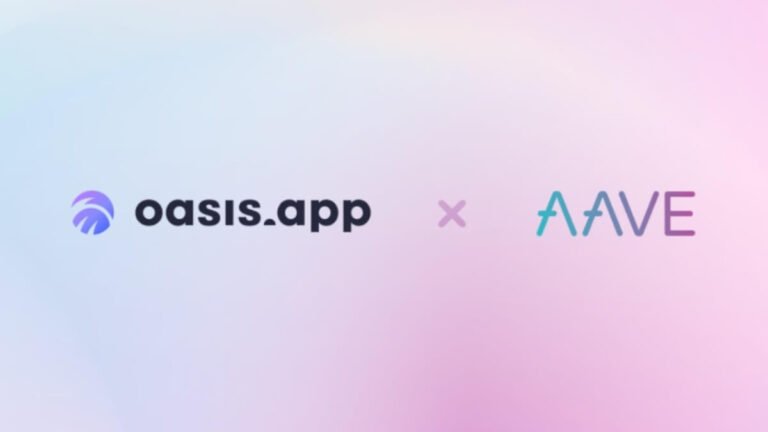DeFi platform Oasis.app is expanding its multi protocol offering, starting with Multiply functionality through AAVE for ETH, stETH and wBTC.
Oasis.app allows users to Borrow Dai against users’ favorite cryptocurrencies, increase exposure against them using Multiply or Earn a competitive yield — all through a single platform.
The Oasis.app aims to provide the most trusted entry point to deploy capital into DeFi. The team is made of passionate thinkers and builders driven to create a better user experience for all while being able to maximize returns.
Oasis.app has raised a total of $11 million in funding through two rounds. In April 2022, it raised $6 million in a Series A funding round led by Libertus Capital around 1 year after the seed round of $5 million.
The new offering adds to the platform’s existing support of Maker collateral types and stETH yield optimizing strategies on AAVE. The same popular interface is largely unchanged, but now also features AAVE as the source for liquidity.
Aave Protocol is a non-custodial, open-sourced decentralized liquidity protocol that enables users to supply and borrow crypto assets.
Oasis Multiply, built on top of the Maker Protocol, 1inch DEX aggregator and AAVE, allows users to borrow stablecoins and create Multiply positions, similar to leveraged or margin positions but without the need to borrow funds from a centralized counterparty.
The new introduction of Oasis Multiply for AAVE enables users to immediately utilize their borrowed USDC to buy more collateral (currently wBTC, ETH and stETH) all within the platform. This means users can increase or decrease their exposure to a single asset, without having to perform multiple transactions or use other apps for the exchange.
With these new collateral alternatives for Multiply, users can select to increase their exposure to wBTC, ETH and stETH. This is enacted in the same manner as already available for stETH – the yield optimized stETH strategy, where ETH debt is used – using AAVE through Oasis.app UI.
Users enter a position with any of the supported collateral, select the multiple, and open a long position with just a couple of clicks. In a single transaction, Oasis.app deposits the user’s collateral to AAVE, borrows USDC and purchases more collateral with it, before depositing it back into the protocol.
Oasis.app charges a fee of 0.2% over the required swap per Multiply action. A variable borrowing fee is paid from the user’s Multiply position to AAVE, and users are paid a variable lending fee for providing liquidity to AAVE. All of these details can be seen in the main view of the UI under “Net Borrowing Cost”. Ethereum gas fees apply, with the value dependent on the network conditions.
With Multiply products, as a user’s exposure increases, so too do the risks. Liquidation risks are higher in Multiply positions, so they need close monitoring to ensure the LTV remains within healthy limits. While AAVE and Oasis are battle-tested apps, smart contract risk is always present.
Oasis said that it will soon add stop-loss functionality in order to help users mitigate this risk.
Oasis.app CEO Chris Bradbury, said: “It’s great to see additional support for AAVE Protocol land on Oasis.app after the recent stETH Earn product using AAVE a few weeks ago. Not only is it another protocol our users can use, but it gives them the option to multiply their exposure now against USDC as well as Dai.”
“All of this continues to drive us towards our ultimate vision of building the most trusted place to deploy your capital across DeFi, and there are several exciting updates ready to add to this release after the holidays”, Chris added.
Stani Kulechov, Founder and CEO of Aave Companies, said: “Oasis Multiply brings new functionality to the Aave Protocol that simplifies how DeFi users can adjust their exposure and positions in a few simple steps.”
“By making the UX and UI more seamless, Oasis is increasing the overall usability of DeFi. This is the right step towards encouraging broader adoption,” Stani added.
Aave Companies aims to empower people through technology and innovation. The company builds web3 protocols, applications and tools and is known for creating the Aave Protocol, one of the most widely used decentralized liquidity protocols.
Governed by users, the protocol allows people to supply and borrow crypto assets peer-to-protocol without intermediaries. Recently, the company launched Lens Protocol, an open-source, decentralized social protocol with built-in tools for developing social media applications and services, and for consumers to create, manage, and own their own social profile and data.
Read Also: EPNS Joins Forces With Aave To Enhance Its Notification Standard



